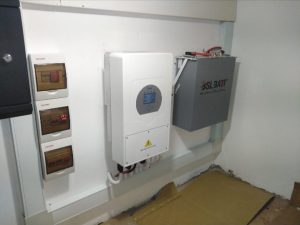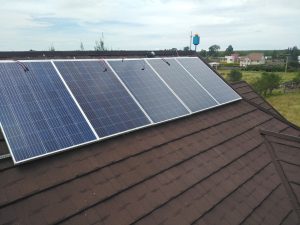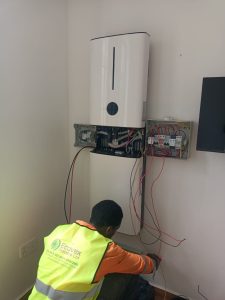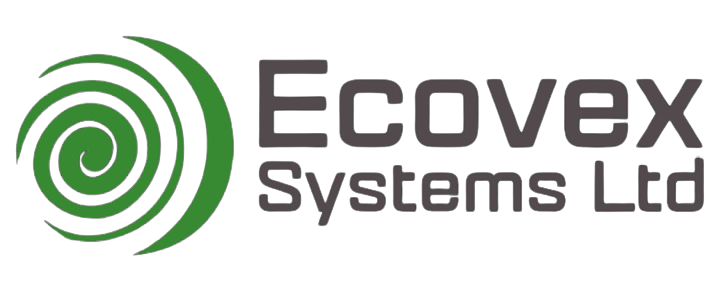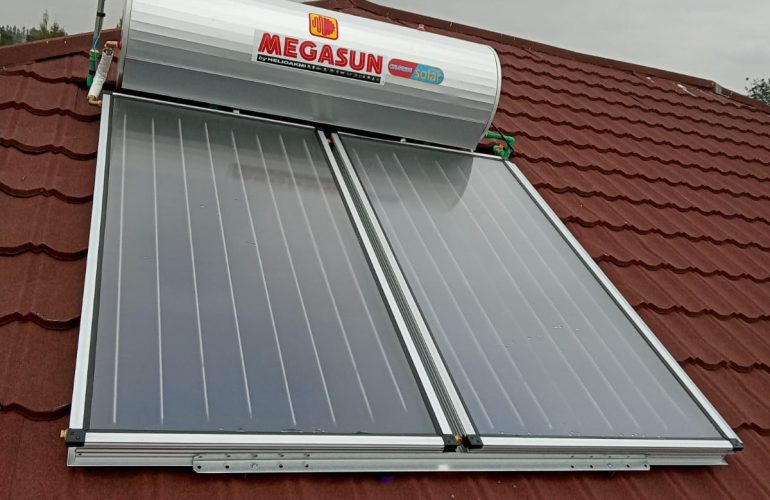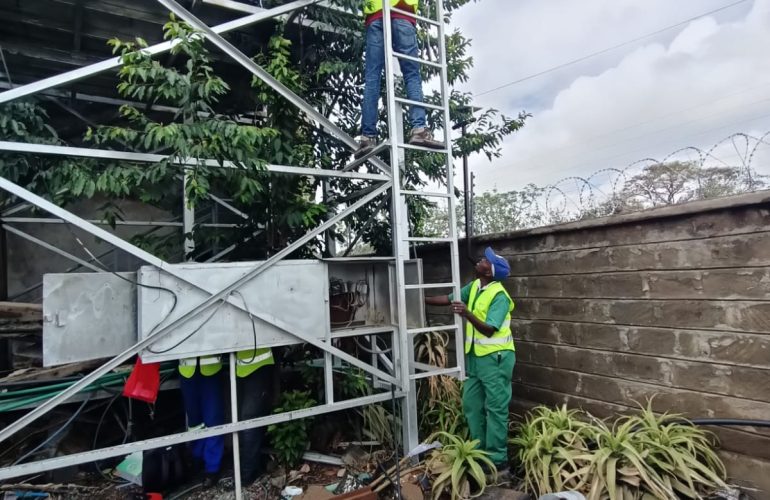Solar systems
A solar system also known as photovoltaic (PV) system is composed of one or more solar panels combined with an inverter and other electrical and mechanical hardware that use energy from the Sun to generate electricity. PV systems can vary greatly in size from small rooftop or portable systems to massive utility-scale generation plants.
The light from the Sun, made up of packets of energy called photons, falls onto a solar panel and creates an electric current through a process called the photovoltaic effect. Each panel produces a relatively small amount of energy but can be linked together with other panels to produce higher amounts of energy as a solar array. The electricity produced from a solar panel (or array) is in the form of direct current (DC). Although many electronic devices use DC electricity, including your phone or laptop, they are designed to operate using the electrical utility grid which provides (and requires) alternating current (AC). Therefore, in order for solar electricity to be useful it must first be converted from DC to AC using an inverter.
In addition to the solar panels, there are other important components of a photovoltaic system which are commonly referred to as the “balance of system” or BOS. These components (which typically account for over half of the system cost and most the of maintenance) can include inverters, racking, wiring, combiners, disconnects, circuit breakers and electric meters.
Solar off-grid systems
The term off-grid refers to a situation where a solar photovoltaic system is not connected to the utility grid or national grid. This approach is extremely useful in some areas in Kenya where there is little access to electricity or there is no national electricity grid at all.
Solar on-grid system
On-Grid Tie Solar Power, the Energy produced by solar panels is directly connected to Kenya Power Grid by the inverter. This system does NOT use any batteries for energy storage and therefore only works during the day to supplement the grid. The main parts of Grid Inverters are Solar Panels, Grid Tie inverters, and Mounting structures.
Backup system
A power backup system is a means of storing power to use when you don’t have power (during blackouts). By the use of an inverter charger and storage batteries. The batteries are charged from the grid.
System Components
-
- Solar Panels
- Inverters
- Mppt Charge Controllers
- Batteries
- Solar Structures
- Voltage Stabilizers (AVs)
- Change Over Switches
- DC Cables
- Connecting Accessories
